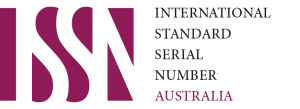Editorial Policies |سياسات التحرير
Copyright Notice
The copyright of the contribution is transferred to MJAES in case of acceptance. The copyright transfer covers the exclusive right to reproduce and distribute the contribution, including reprints, translations, photographic reproductions, microform, electronic form, or any other reproductions of similar nature.
The Author(s) may publish his/her contribution on his/her personal web page provided that he/she creates a link to the mentioned volume of MJAES.
The Author(s) warrants that his/her contribution is original, except for such excerpts from copyrighted works as may be included with the permission of the copyright holder and author thereof, that it contains no libelous statements, and does not infringe on any copyright, trademark, patent, statutory right, or proprietary right of others.
The Author(s) also agrees for and accepts responsibility for releasing this material on behalf of any and all co-authors.
The full guidance that applies to this license can be found at http://creativecommons.org/licenses/by/4.0/.
Upon submission of a paper to MJAES, authors agree to comply with an open access Creative Commons Attribution (CC BY) license.
Open Access
MJAES publishes all articles under the open-access model. The full content of the articles published by MJAES is freely available for anyone to read, download, print, use, reuse, and build upon. The published articles are distributed under the Creative Commons Attribution 4.0 International License which permits unrestricted use, distribution, and reproduction, free of charge, in any medium, provided that the original author(s) and original publisher are given due credit. The full text of all content is available for free and open access without delay, with no embargo period and no registration required to read the content without any charge.
Policy of Plagiarism
- The MJAES journal does not accept research that exceeds 20% plagiarism.
- The plagiarism test is performed by using the Turnitin program.
“Plagiarism is the use of others’ published and unpublished ideas or words (or other intellectual property) without attribution or permission, and presenting them as new and original rather than derived from an existing source. The intent and effect of plagiarism is to mislead the reader as to the contributions of the plagiarizer. This applies whether the ideas or words are taken from abstracts, research grant applications, Institutional Review Board applications, or unpublished or published manuscripts in any publication format. Plagiarism is scientific misconduct and should be addressed as such.
Self-plagiarism refers to the practice of an author using portions of their previous writings on the same topic in another of their publications, without specifically citing it formally in quotes. This practice is widespread and sometimes unintentional, as there are only so many ways to say the same thing on many occasions, particularly when writing the methods section of an article. Although this usually violates the copyright that has been assigned to the publisher, there is no consensus as to whether this is a form of scientific misconduct, or how many of one’s own words one can use before it is truly “plagiarism.” Probably for this reason, self-plagiarism is not regarded in the same light as plagiarism of ideas and words of other individuals. If journals have developed a policy on this matter, it should be clearly stated for authors.”
Direct plagiarism is the plagiarism of the text. Mosaic plagiarism is the borrowing of ideas and opinions from an original source and a few verbatim words or phrases without crediting the author.
Authors can adhere to the following steps to report plagiarism:
- Inform the editor of the journal where a plagiarized article is published.
- Send original and plagiarized articles with the plagiarized part highlighted.
- If evidence of plagiarism is convincing, the editor should arrange for a disciplinary meeting.
- The editor of the journal where the plagiarized article is published should communicate with the editor of the journal containing the original article to rectify the matter.
- The plagiarist should be asked to provide an explanation.
- In case of nonresponse within the stipulated time or an unsatisfactory explanation, the article should be permanently retracted.
- The author should be blacklisted and debarred from submitting an article to a particular journal for at least 5 years.
- The concerned head of the institution has to be notified.








